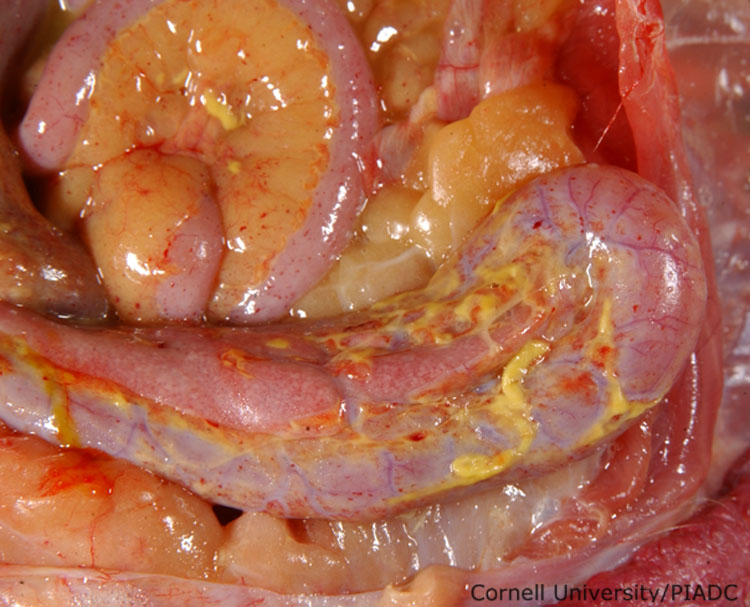Submitted by admin on Tue, 08/26/2008 - 15:40
tissue_organ_import:
Intestines and coelomic cavity: petechiae, egg-yolk peritonitis.
Morphologic diagnosis:
Coelomic cavity: Moderate acute multifocal petechiae. Coelomic cavity: Fibrinous ceolomitis (presumed secondary to egg-yolk peritonitis)
Clinical description:
This image was taken 2 days post experimental inoculation with highly pathogenic avian influenza. The yellow proteinaceous material on the surface of the intestine is caused by chronic egg-yolk peritonitis. Birds that survive an AI infection longer than 7-10 days, may develop egg-yolk peritonitis as a result of ruptured ova. In this individual, the peritonitis is an unrelated finding, as this bird was only infected with AI for 2 days. Nevertheless, peritonitis associated with HPAI would have a similar appearance.
Pathologic description:
The serosal surfaces of the intestinal loops and the mesenteric fat are stippled by numerous, pinpoint red foci and portions of the intestines are coated by strands of yellow, friable material.
Record number:
20783
Case number:
5005
Age:
70 weeks
Breed:
White Leghorn SPF
Clinical form:
Acute
Infection type:
Experimental
History:
The photograph was taken 2 days post inoculation. The bird was experimentally inoculated with highly pathogenic avian influenza virus on 3/2/08 at Plum Island Animal Disease Center. The inoculation was performed in the caudal thoracic air sac with strain A/CK/PA/469/3-84/H5N2, using 0.25ml.
Housing/mgmnt type:
Select One
Priority:
1
Rights:
© Cornell University
Etiology:
Exam findings:
Tissues and organs:
Asset type:
Species:
Image:

- Log in to post comments
